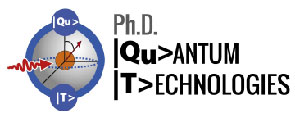Description
Spintronics and Quantum Electronics represent the new candidates for future high-performance computer and information processes. The use of the electron spin, rather than charge, as information carrier, can for instance define the unit of quantum information: the quantum bit (qubit). Recent developments have shown that the exploitation of the Rashba Spin Orbit Coupling (SOC) in two-dimensional (2D) materials is an innovative and attractive solution for the quantum computation. For example, SOC is used for a more efficient charge to spin conversion in spin-orbit torque devices.
Here we propose two-dimensional oxide (2D-oxides) systems as innovative quantum devices 1. The idea is to combine Rashba spin-orbit coupling (SOC), 2D-magnetism, superconductivity (SC) and high-mobility in the same 2D electron gas (2DEG) that is formed at the interface between wide bandgap insulators oxides. We have demonstrated that the superconducting 2DEG created at the interface between LaAlO3 and SrTiO3 (LAO/STO) becomes spin polarized by introducing a few unit cells of delta doping EuTiO3 (ETO), an antiferromagnetic (AF) insulator iso-structural to STO 2. Firstly, we have investigated the interplay between ferromagnetism and Rashba spin-orbit interactions by studying the magnetoconductance curves of the 2DEG as a function of the applied gate voltage and temperature 3. Recently we have also found that the interface exhibits, under visible light, a persistent photoconductivity and anomalous Hall effect. This feature is probably related to the different nature of the photo-excited spin-polarized 4f carriers due to ETO.
The application of oxide 2DEGs to advanced electronics requires also the creation of suitably designed nanodevices. We have realized (LAO/STO) tunnel devices using Helium focused ion beam (He-FIB). Our preliminary measurements show that these devices are fully tunable and could have interesting tunnel I-V characteristics. Our results show that these oxide nanodevices could have a significant and far-reaching impact for new quantum spintronic development.

